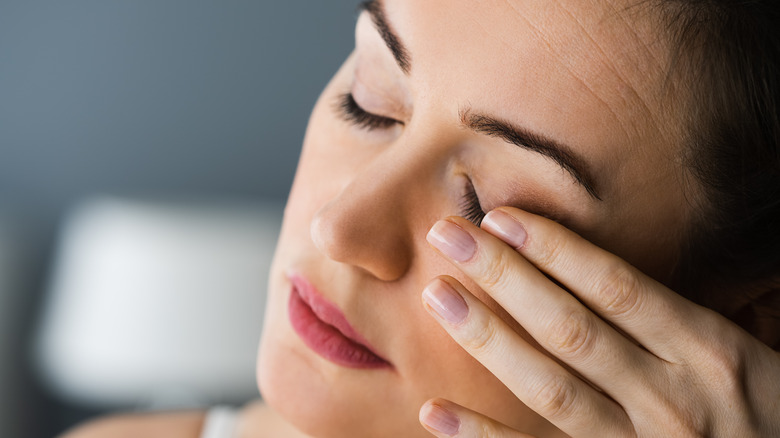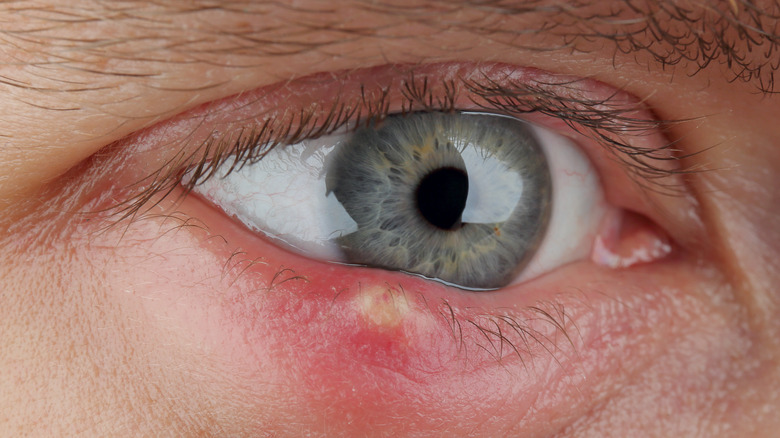What Is The White Bump On Your Eyelid?
A bump developing on your eyelid can be quite bothersome, especially if it's painful or affects your vision. The mental toll it takes can be just as bad, though, as you wonder and worry about what caused the newly developed bump and whether or not it will go away.
When a bump develops on your eyelid, it's going to be a cause for concern as it's directly on your face. Not every bump requires a trip to see a medical professional, though (per WebMD). Most eyelid bumps can occur overnight and leave you with symptoms like blurred vision, tenderness, swelling, redness, and irritation. Surprisingly, there are multiple types of eyelid bumps; depending on the type, the bump may appear on different eyelid areas. Types also each appear for different reasons.
According to Healthline, a stye is the most common type of eye bump and occurs when an oil gland has bacteria in it. These will usually appear as a red bump near the eyelashes. Xanthelasma are soft yellow bumps under the skin, usually located close to the nose (per WebMD). A chalazion happens when there's an oil or tear gland blockage that commonly appears on the upper eyelid (per Healthline). A milium is a whitish cyst or pocket under the skin that can appear anywhere on the body, including under the eye or on the eyelid (via Cleveland Clinic). So now that you know what your eyelid bump is, what can you do about it?
Most eyelid bumps resolve themselves
Milia, which stem from issues with dead skin cells or damage to the skin, usually eventually go away. No matter where they are, it's not recommended to pop or remove them; instead, you can try using an exfoliator to remove dead skin cells (per WebMD). Gently massaging or putting a warm damp cloth on chalazia and styes can help relieve them. Wearing makeup, using contacts, and popping these can compound the problem or spread more bacteria.
Xanthelasma, which can indicate a cholesterol problem, are the exception when it comes to eyelid bumps, as they won't completely disappear on their own. Home treatment may consist of diet changes or taking a statin prescribed by a healthcare professional to help the cholesterol cause of the bumps. A healthcare professional will cut, freeze, or apply certain chemicals to remove them.
If bumps are causing you serious concern, it is best to see a healthcare professional for treatment. As styes and chalazia are based on bacteria, you may be prescribed antibiotics to help treat them. Your doctor may also discuss draining or removal options.
There are a few things you can do to help reduce your chances of getting some eyelid bumps. The biggest one is washing your hands, says Healthline. If you wear contact lenses, keep them clean and disinfected when touching your eyes, WebMD notes. Don't wear makeup on your eyes overnight. Maintain healthy cholesterol, avoid heavy facial creams, and exfoliate your skin.


